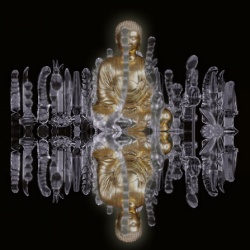Korean Buddhism: From Metaphysics to Ethics
Korean Buddhism: From Metaphysics to Ethic
My ethics professor on my first day of class as an undergraduate philosophy student said, “The study of ethics will not necessarily make you more moral.” He had a point. For many scholars, whether the study of meta-ethics and normative philosophies has any immediate bearing on practical ethical problems is open to interpretation. Some even quip that, if anything, the study of ethics might make for excellent training in manipulation.
However, the founders of Korean Buddhism believed that the study of philosophy leads one to an awakening as to the nature of the social and ethical aspects of individuals’ existence. A dominant figure in the history of Korean Buddhism who developed this line of thinking was Uisang (625-702), who studied in Tang China with Zhiyan and is credited as the founder of the Hwaom School of Korean Buddhism.
In the history of Western philosophy, ontological debates about the nature of substance have traditionally revolved around whether the basic stuff of reality is either material (e.g. as thought by Locke), immaterial (e.g. as thought by Berkeley), or both (e.g. as thought by Descartes). The Korean Buddhist conception of the nature of reality as held to by the Hwaom School, which shares significant similarities with German Idealism, is quite different. Dr. Jin Y. Park succinctly explains the basic philosophical conception of this tradition in her essay on “Korean Buddhist Philosophy”:
“In the Hwaom Buddhist tradition, the original nature of a being, frequently referred to as ‘the dharma nature’, is characterized by its nonsubstantiality. The basic Buddhist doctrine postulates the identity of a being as conditional. A being in Buddhism is not an owner of independent and permanent substance but exists in the milieu of conditioned causality. Buddhism identifies its causal theory as dependent-arising…”
In other words, the idea behind this conception of the nature of reality is that nothing exists in and of itself but, instead, in relation to all other things. Hwaom Buddhism uses the example of one piece of dust to describe how the smallest of things is identified with the whole universe because its existence arises from its relation to everything else.
For Korean Buddhism, becoming aware of the nature of reality and how one’s existence is shared with every other being self-evidently elicits compassion. Earlier I mentioned that some quip that philosophical studies might enhance one’s capacity for manipulation. Korean Buddhist scholars to the contrary believed that compassion derived from acquiring knowledge of the world cannot help but awaken and develop one’s moral sensibilities.
A unique feature of this sense of compassion arising from appreciation of the nature of reality and one’s place in it is that one’s attitude towards ethics may not necessarily be based on rationalistically derived rules or any sense of obligation per se. Instead, one’s attitude towards ethics is based more on what Dr. Koji Tanaka in an article on “Japanese and Korean Philosophy” describes as a “responsiveness to everything around us.”
Though later Korean Buddhist scholars attempted to determine how ethics might be more rule-bounded, it was still the continued experience of awakening to the nature of reality and one’s place in one’s surroundings that was taken as the fundamental basis for what should constitute understandings of one’s social experience and interactions with others.
Awareness of the complexity of social relations and being alert to how small changes in one’s environment may impact these relations is a striking feature of Korean philosophy and ethical attitudes in general. Developing and exercising acute situational awareness is a common theme found across Korean intellectual traditions and a hallmark of Koreans’ development of character. Future entries in this series will explore how this ties into other aspects of Korean society and intellectual history.
The views expressed herein do not necessarily reflect the views of the Asan Institute for Policy Studies.
